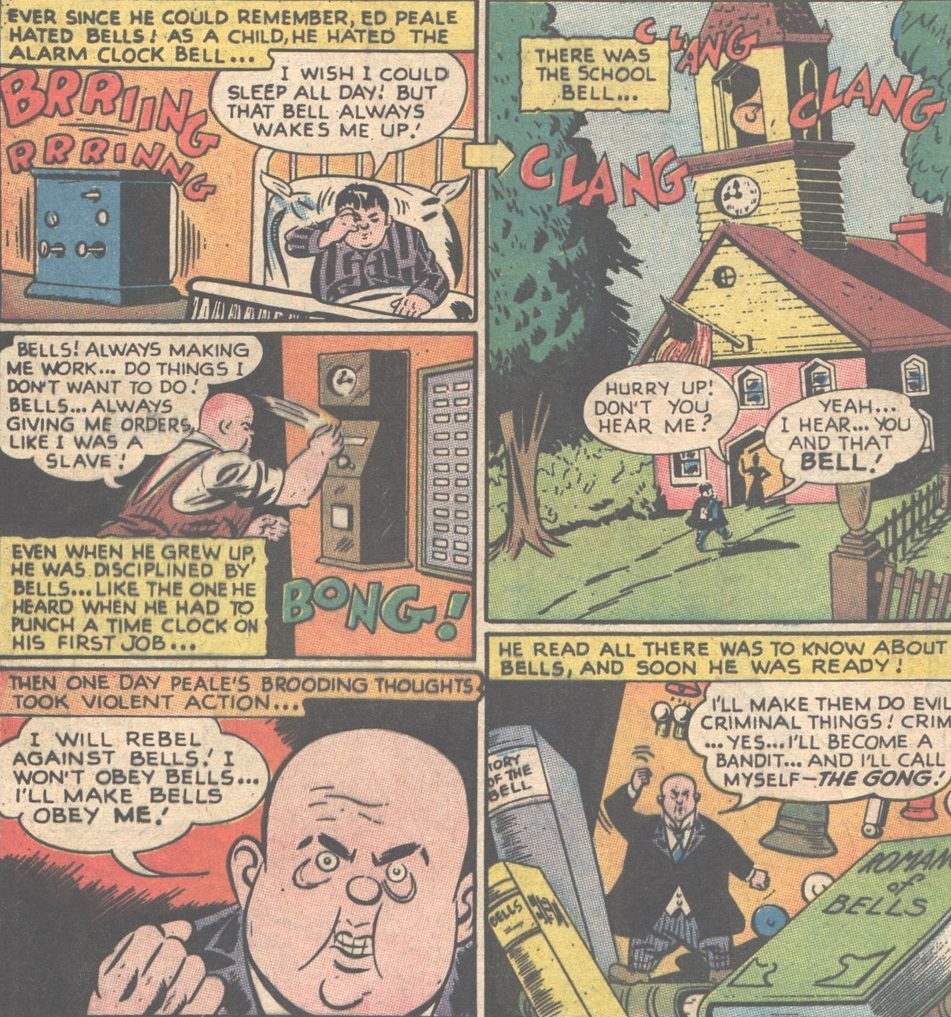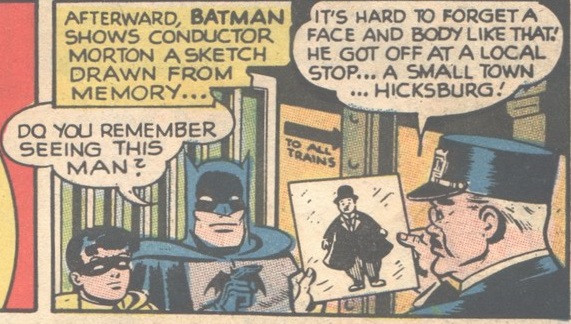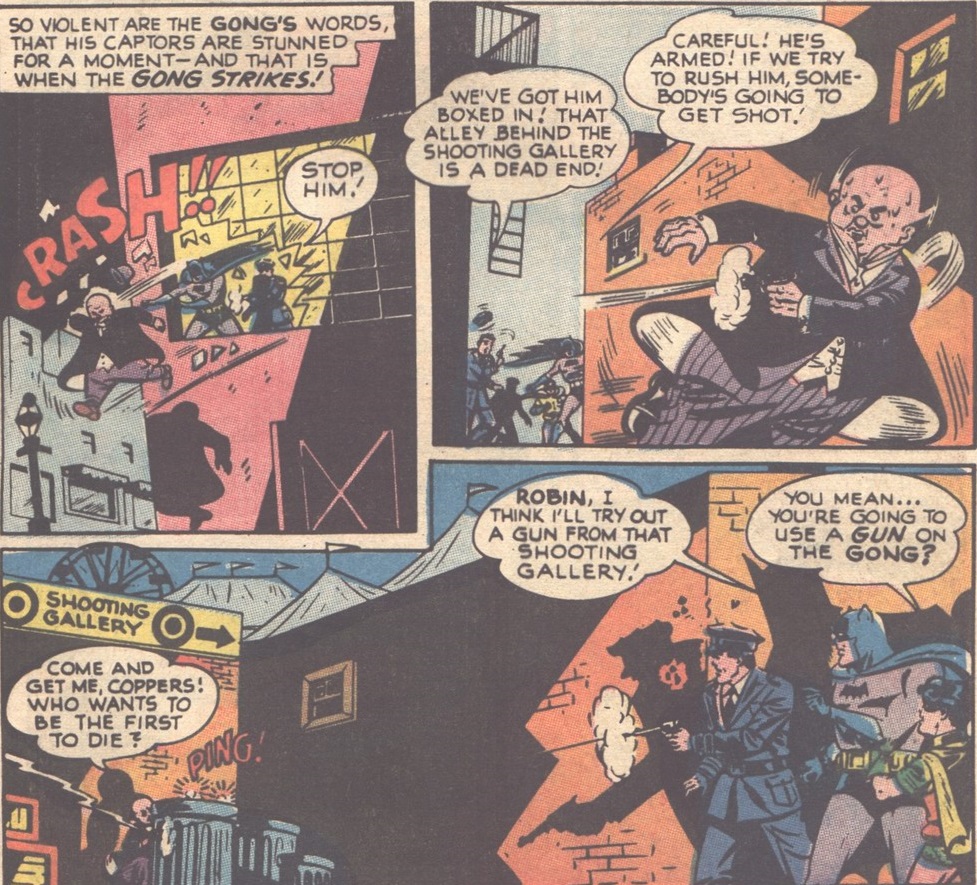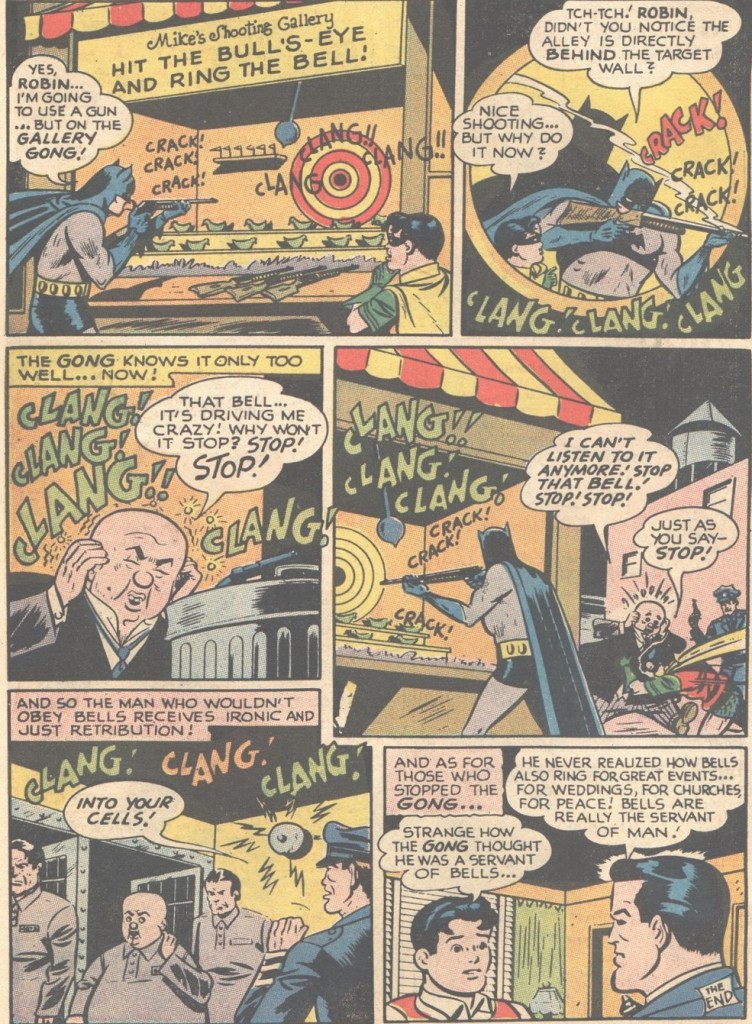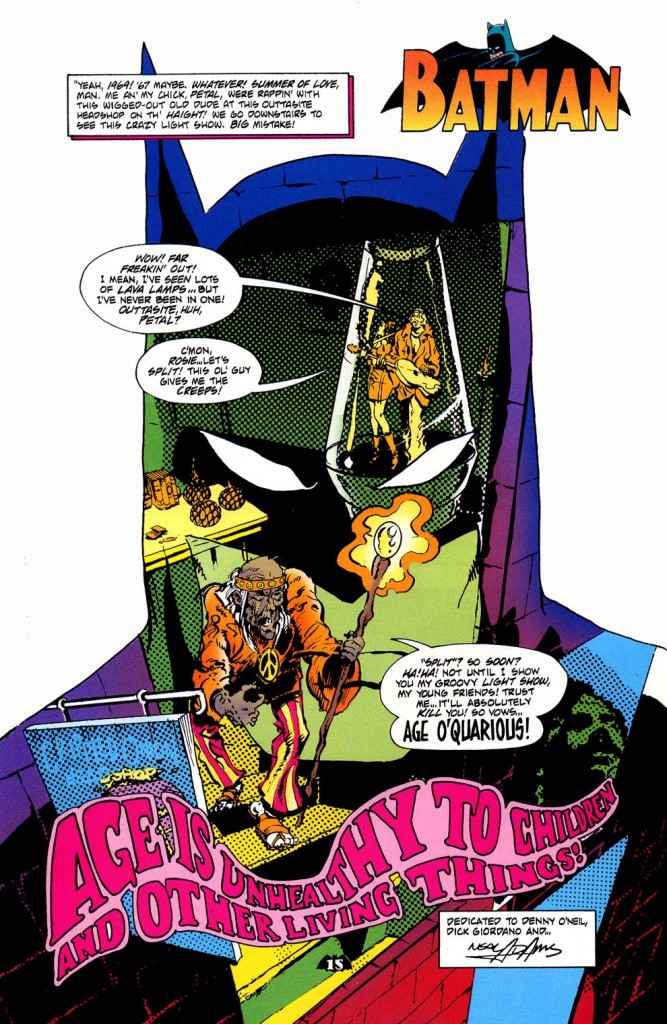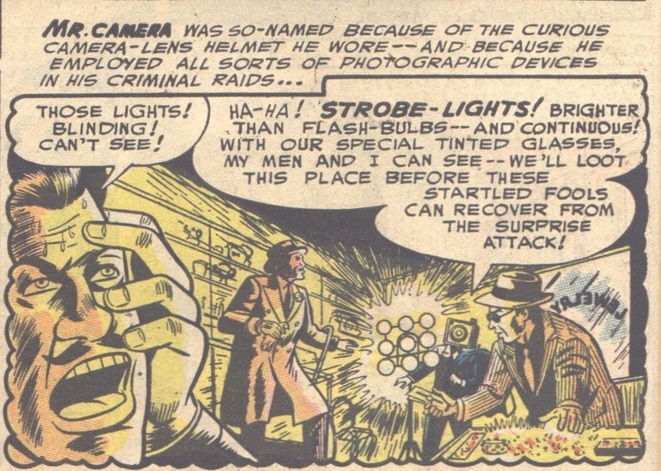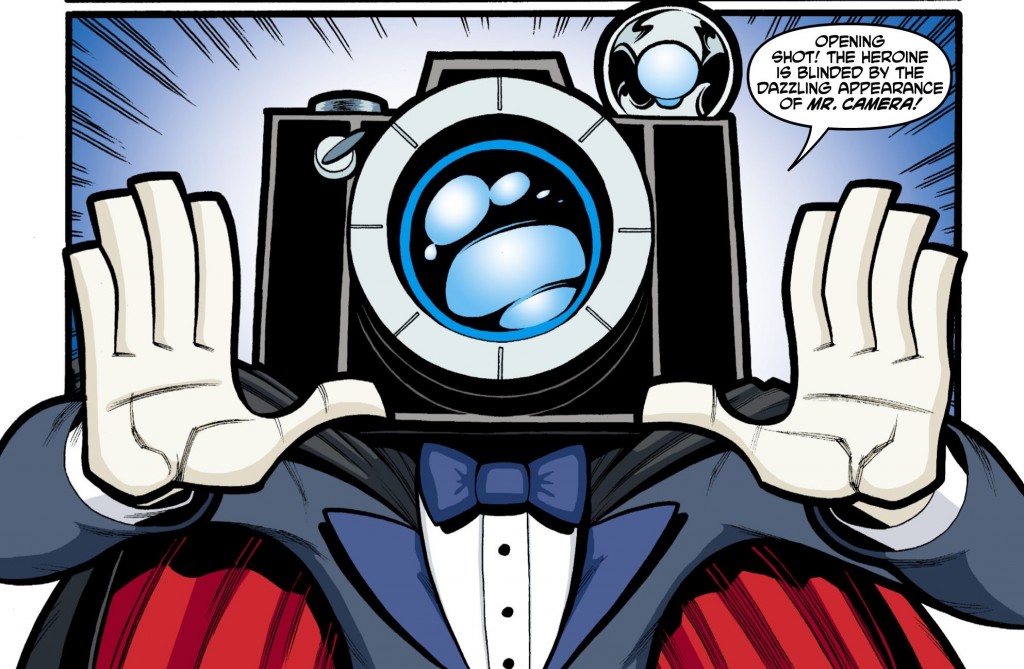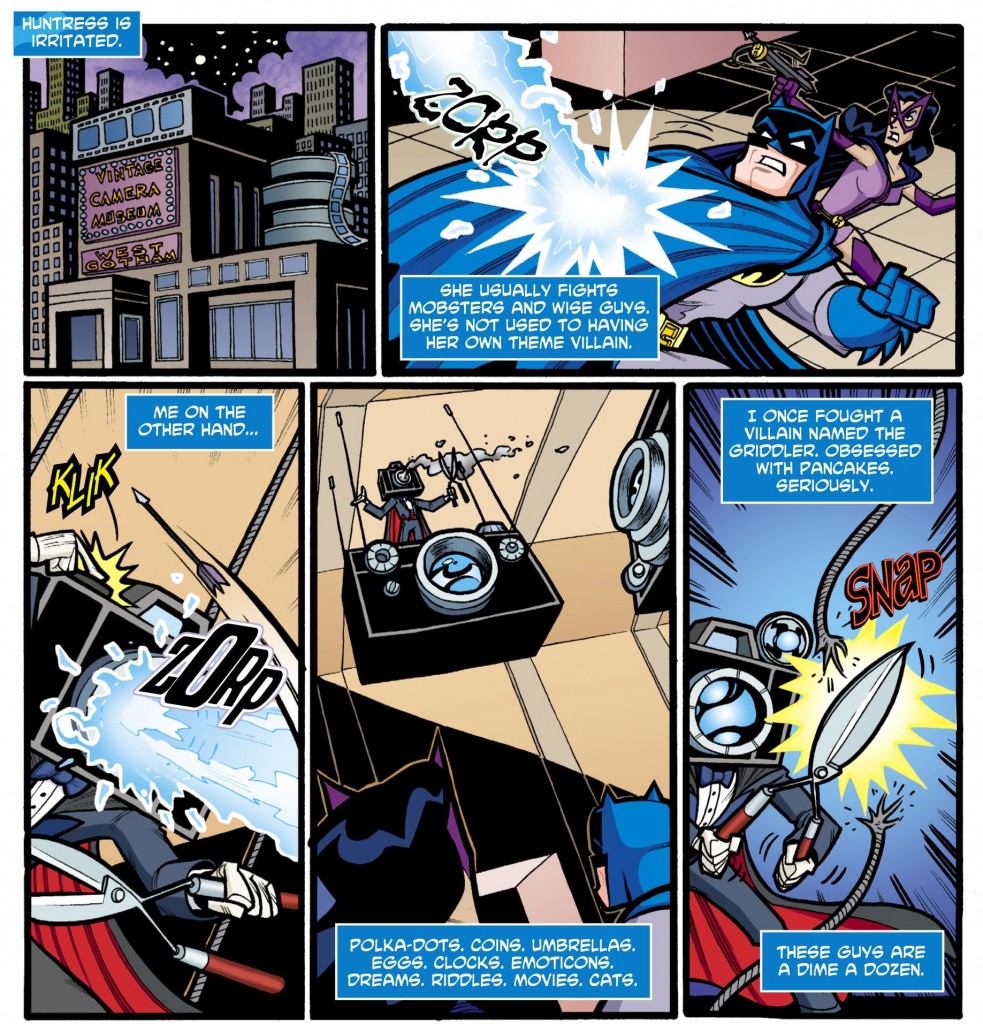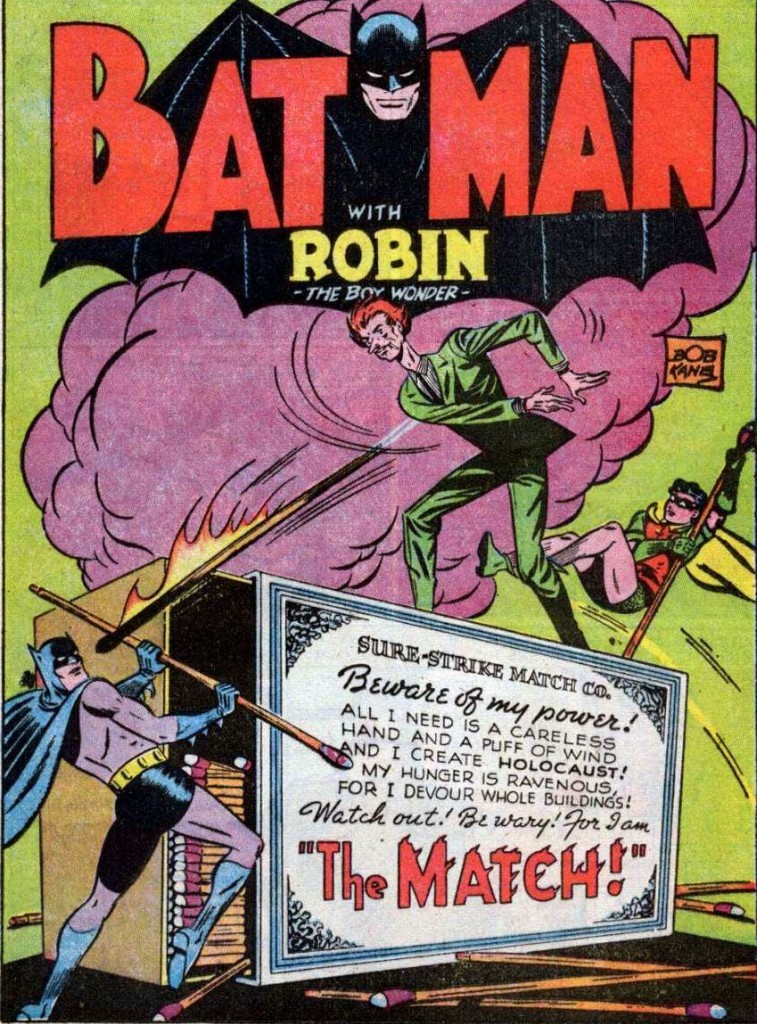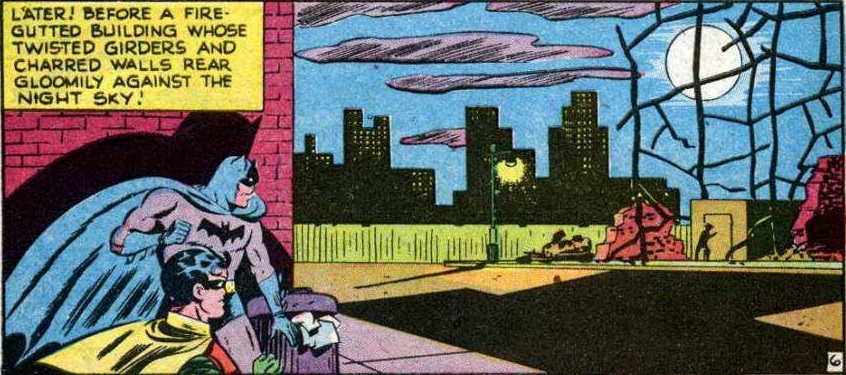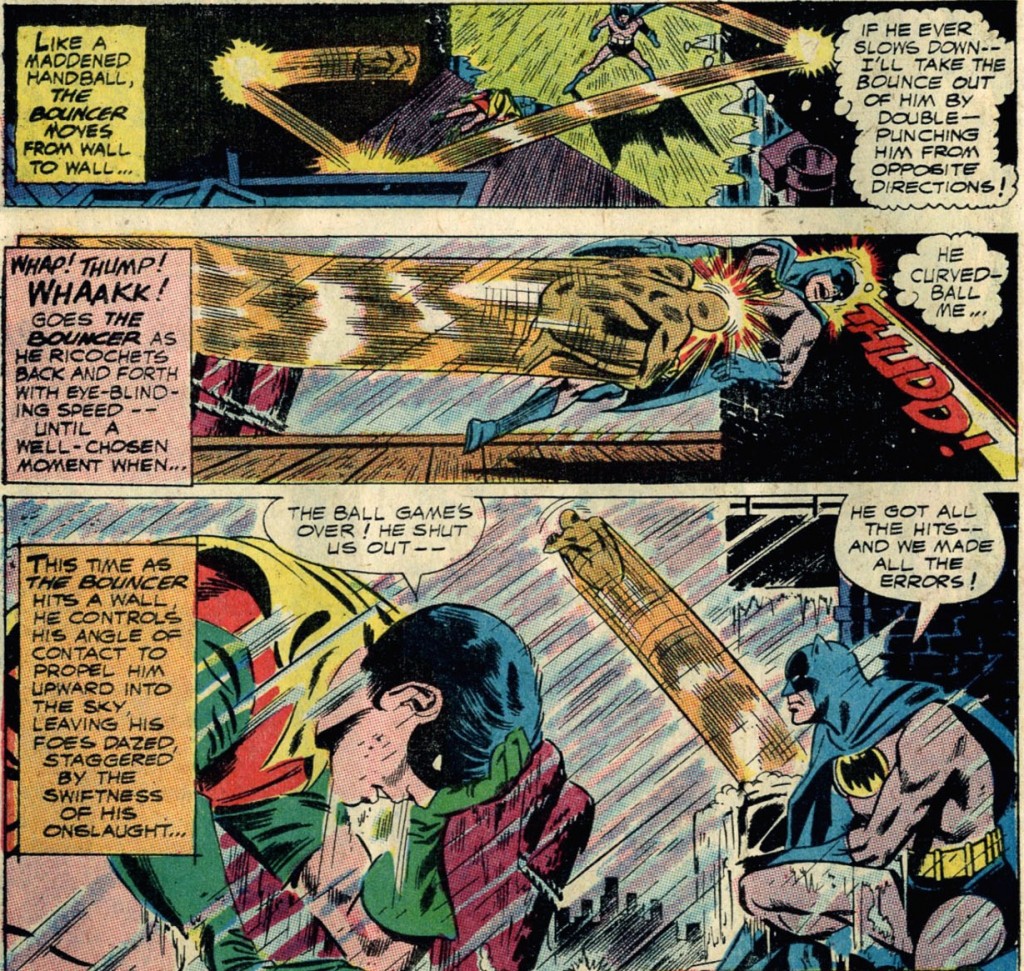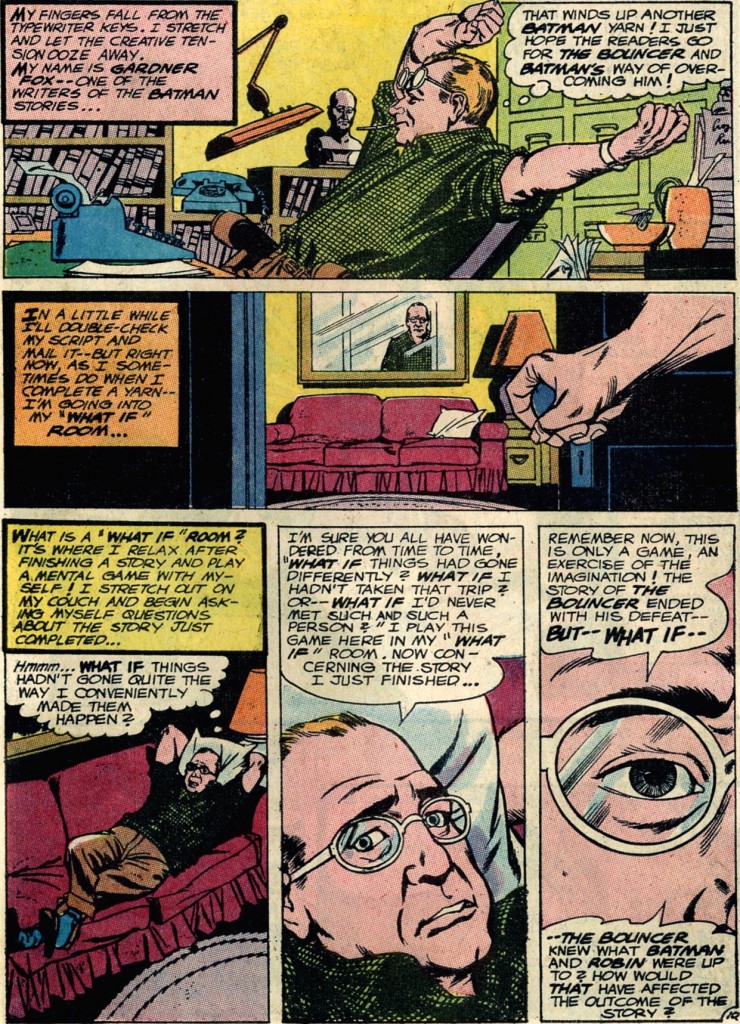This is Gotham Calling’s 100th post, so I’m celebrating by focusing on one of my favorite aspects of Batman lore, namely the unbelievable amount of obscure, silly villains the Caped Crusader has faced over the years. In Gotham City, it looks as if every gimmick imaginable has somehow been used for evil (especially if you count all the odd foes created specifically for the 1960s’ TV show). Once Batman even fought a dude with the power to turn people into musical performers!
Seriously, in terms of eccentric, goofy-looking, pun-prone supervillains, no-one can beat the Dark Knight’s rogues’ gallery, with the possible exception of Captain Laserbeam:
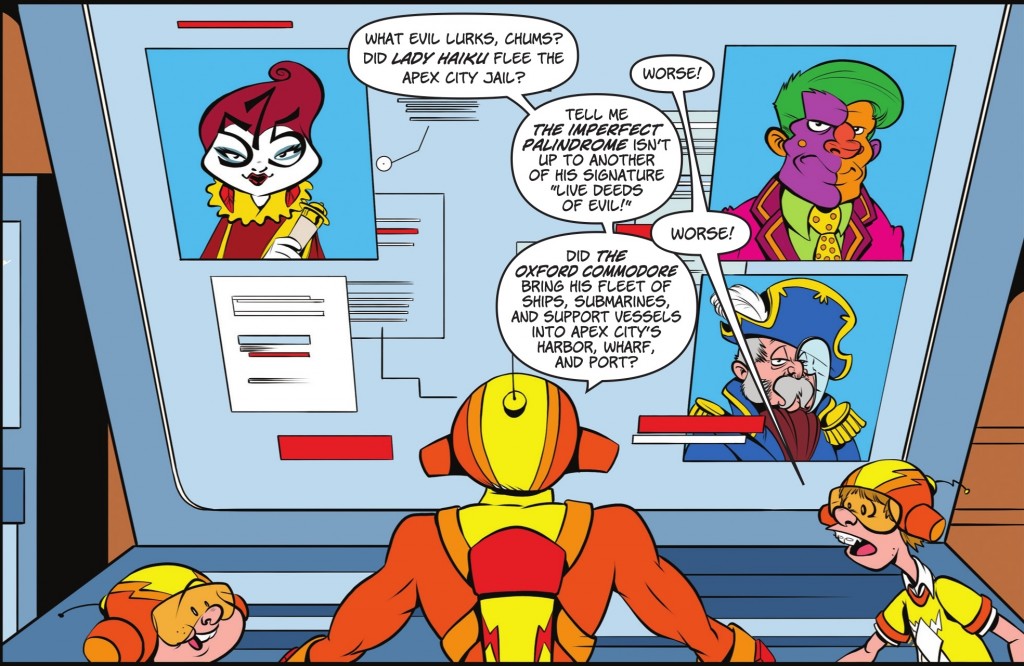 The Thrilling Adventure Hour
The Thrilling Adventure Hour
Nowadays, there is so much speculation across the internet over who is going to show up in the fast-approaching Batman v Superman: Dawn of Justice. However, one thing I can tell you for sure – none of these six villains is getting anywhere near a Zack Snyder blockbuster anytime soon:
THE GONG
As far as I know, Ed Peale, aka the Gong, has only appeared in one tale: ‘The Bandit of the Bells!’ (Batman #55, reprinted in Batman #198).
His origin story is as complex, relatable, and full of pathos as it can get:
It sounds like a stretch at first, but Ed Peale proves to be quite creative in terms of getting the most out of his shtick of making bells ‘do evil, criminal things!’ He makes false alarm calls so that the sirens of a fire engine, an ambulance, and a patrol car create a ‘sound cover’ over the alarm of the jewelry store he is robbing. He rings the starter’s bell to summon down every elevator operator in a building, so that no-one spots his gang (the Gong’s gang!) crashing a diamond cutter’s office on the top floor. He even manages to get his hands on a huge bell crammed with gems and gold nuggets!
And, of course, his very appearance (designed by Charles Paris) further reinforces the whole motif:
In typical thematic consistency, everything in this comic revolves around bells. Batman tracks down the Gong by drawing on bell-related clues. The villain’s obligatory deathtrap consists of leaving the Dynamic Duo adrift on a loose buoy. Unsurprisingly, the resolution also involves bells, in a scene that, for once, convincingly justifies the Caped Crusader using a gun:
What an important moral lesson!
AGE O’QUARIOUS
Between all the free love, the hallucinogenic drugs, the hippie movement, and the broader generational clash, the 1960s must have been a damn crazy era. And if there is one Batman villain who personifies this craziness, it’s Age O’Quarious (get it?).
Age O’Quarious was actually created in 1997. Michael T. Gilbert did a very cool, metafictional anthology issue called ‘Stories’ (Legends of the Dark Knight #94), about an ersatz-Salman Rushdie stuck in an elevator, waiting for a group of fundamentalists to come and kill him. While the skeptical writer awaits his death, the other passengers tell him about their personal encounters with the Dark Knight – and each flashback is a riff on a different comics’ period. For the Dennis O’Neil era, Gilbert came up with this doozy of a pastiche, set in the late sixties, about a scientist who was fired for being ‘too old’ and now seeks revenge against ‘youth culture’ by inventing a black-light wand that can absorb youth!
It’s a brilliant homage, not only because it comments on the values of the time, but because both Batman’s speech to Age O’Quarious and the story’s final twist genuinely feel like the kind of stuff you can find in those comics. Moreover, Gilbert (who, besides writing, also drew and colored the issue) absolutely nailed the trippy visual style of an art job by Dick Giordano and Neal Adams.
MR. CAMERA
Created by David Vern and Sheldon Moldoff (as Bob Kane), Mr. Camera first showed up in 1954, in ‘The Boy Wonder Confesses!’ (Batman #81, later reprinted in Batman #185).
With a name like that, you get no prizes for guessing what his gimmick was…
Also, because this was the fifties, you can be darn sure there was a fight on top of a giant camera (and later one involving a giant slide projector).
Me, I would have loved to see Mr. Camera show up every few years, each time engaging with a new visual arts movement, from décolage to postminimalism… At the very least, he deserved a cameo in Andy Warhol’s Batman Dracula picture!
However, surprisingly almost 60 years went by before the character found his way back to the pages of a Batman comic, with ‘Captured by Mr. Camera!’ (Batman: The Brave and the Bold #14). Written by Landry Q. Walker, with art by Eric Jones, this issue was as packed with fun and zest as any episode of the Brave and the Bold cartoon show (where Mr. Camera did have a couple of cameos).
This time around, the camera-themed rogue goes after a different vigilante, namely the Huntress, who is a bit freaked out, as I guess anyone would be if stalked by a creepy criminal with a huge camera for a head. Well, not quite everyone – the Caped Crusader handles the situation with characteristic nonchalance:
It was a clever reboot, which even set the stage for Mr. Camera to return as more of a threat, but so far this foe hasn’t gotten another chance at the spotlight.
THE MATCH
Written by Bill Finger and illustrated by Charles Paris, ‘The Match!’ (Batman #45, cover-dated February-March 1948) introduced the titular villain, an arson racketeer who, for a fee, sets fires for clients in need of insurance money.
Like with Mr. Camera, a lot of what appeals to me about the Match has to do with the wonderful design. Charles Paris didn’t bother with a glitzy costume, though, he just made the character’s physiognomy resemble a match:
I also like the way Paris made the villain’s headquarters look like a bunch of burned matchsticks:
All in all, this is a weird little story that reads simultaneously like a lean crime adventure and like an ill-disguised advertisement for the Fire Department. It actually starts out with the Dynamic Duo joining the Gotham City Fire Patrol and finishes with the Boy Wonder addressing the readers directly, telling kids not to play with matches!
THE BOUNCER
The Bouncer came on the scene with ‘The Strange Death of Batman!’ (Detective Comics #347), first published in 1966. He was a young metallurgist who stumbled onto an alloy of rubber, steel, and chrome, which could bounce higher than anything else (he called it ‘elastalloy’). Naturally, the nameless metallurgist used this discovery to make a supervillain suit, turn himself into a human Wham-O SuperBall, and go on a crime spree in Gotham City. So yeah, the Bouncer’s basic gimmick was that he, well, bounced. A lot.
By itself, this may sound kind of lame. However, the Bouncer’s first appearance had a lot going for it. For one thing, the story was written by factoid-loving Gardner Fox, which means that not only was it full of delightfully cheesy puns, but halfway through we got a lesson about elasticity! Furthermore, Carmine Infantino and Joe Giella delivered some crisp and vibrant art:
To be sure, the Bouncer wasn’t the most memorable aspect of this tale (more on that below). In fact, given his ill-defined personality and his limited bag of tricks, fans weren’t exactly crying out for a return. Thus, after this, the Bouncer didn’t have much of a career, although he did show up once again in ‘While the Bat’s Away…’ (Batman #336), a fun issue that brought together many of the Caped Crusader’s third-string villains.
(Also, I’m guessing the Bouncer must have been, at the very least, a visual inspiration for the lead of the entertaining slacker-superhero series, The Bounce.)
GARDNER FOX
In a way, Gardner Fox is the least obscure character on this list. After all, he was a real-life author who wrote thousands of comics, many of which set in Gotham City. But even as a fictional character, Gardner Fox’s credits list exceeds those of the Gong, Age O’Quarious, Mr. Camera, the Match, and the Bouncer since he enjoyed writing himself into his own stories (like in The Flash #123 and Strange Adventures #140). What’s more, other writers have included him in their comics as well (Captain Carrot and his Amazing Zoo Crew!, DC Comics Presents: Hawkman, DC Comics Presents: The Atom). Fox isn’t usually depicted as a villain, but I would argue he comes close enough in the aforementioned ‘The Strange Death of Batman!’
For the first nine pages of Detective Comics #347, Batman and Robin (here also referred to as ‘the Gang-Busting Gladiators’) face the Bouncer and you may be tempted to assume that the opening splash’s remark about this being an offbeat story was pure comics’ hyperbole. Indeed, the whole thing unfolds like a fairly straightforward adventure: the plot wraps up when the Dynamic Duo saves the day through a comic bookish plan involving electrodes and a high frequency beam.
Except that then we get this page:
Gardner Fox goes on to imagine another version of the story… and this time, the Bouncer actually manages to kill Batman! That’s right: there is a comic where Gardner Fox is literally shown to be responsible for the murder of the Dark Knight, on a whim. And things only get wilder from there, as Robin seeks out revenge and eventually teams up with a Batman from a parallel universe.
Put that in your movie, Mr. Snyder, and I will give you my money.
NEXT: Batman burns.

